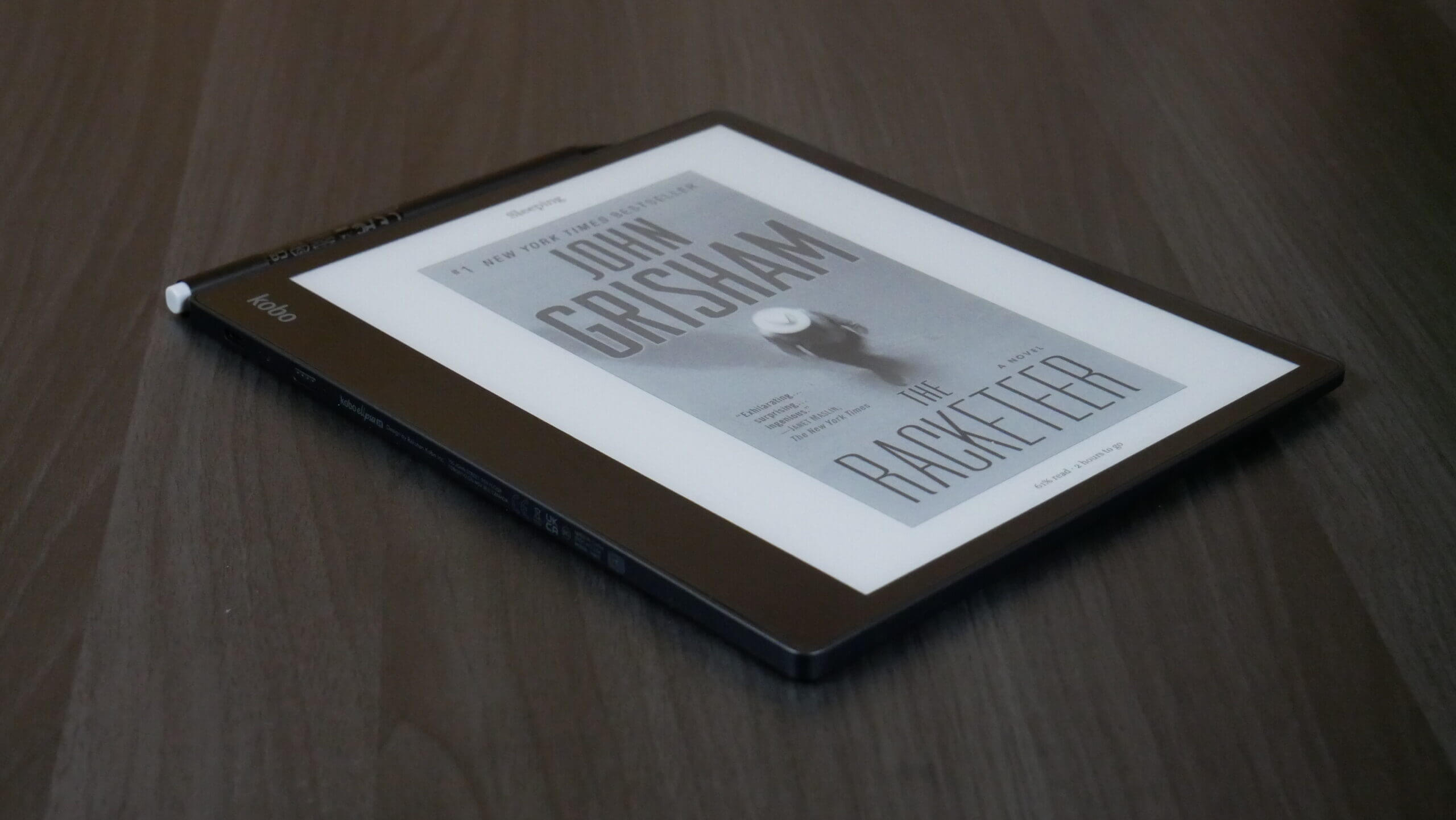Do you use an e-reader to read digital books or other content such as comics, manga or magazines? What about a digital note-taking device to freehand draw or edit PDF files? The Amazon Kindle, Barnes and Noble Nook and Kobo are three of the most popular brands in North America and most of the world. Midsize e-reader companies such as Pocketbook, Onyx Boox, Bigme and Fujitsu have major selling points; some are multimedia tablets with Google Play. What do these all have in common besides E INK e-paper screens? They are just big hunks of plastic. Where is the Apple build quality in e-readers? Where is the aluminum or other metals?
E-Readers have always been relatively cheap and cheerful. If you want an entry-level Kindle e-reader with 300 PPI, a six-inch will set you back about $100 or less. The Kobo Nia, their entry-level reader, is about the same price and ditto for the Nook 4e. These brands have higher-tier models with better lighting systems, RAM, CPU and storage. The Scribe, Sage and Elipsa 2e are all e-readers with lite note-taking functionality and cost way more. However, no matter what version you buy, they are just made of plastic. Kobo at least uses Ocean bound plastic on their Kobo Clara 2e and Elipsa 2e, but plastic is plastic.
Other brands sell dedicated e-readers, too, that have similar specs as the big three. However, they all have different value propositions. Some small regional players include Bookeen, Tolino, Hanvon, Huawei and Fujitsu. Some of them utilize colour e-paper technology, such as Kaleido 3 or Gallery 3, which makes reading a better experience.
Dedicated digital note-taking devices have more features, large screens and tremendous hardware. They also are way more expensive than dedicated e-readers. This is because most have the latest e-paper screens and WACOM compatibility and pay Adobe for licenses. 7.8, 10.3, or 13.3 e-paper panels are not cheap, mainly due to scale; they are expensive because they aren’t making millions of them, just a few thousand at a time. Whether you spend $399 or $1299 on an excellent e-note with all the great hardware, they are made of plastic and feel cheap.
Plastic is likely the one thing that is affordable for e-reader companies to use since they have to sell them at a profit to make money. Companies use the cheapest components and internal hardware. They aren’t using a system on a chip or an internal hard drive but simply an internal SD card. The E INK screen is the most expensive part of an e-reader or e-note. Plastic is used on the power button, the volume buttons, the page turn buttons or the home button. Plastic is everywhere; it looks cheap and has no sex appeal. That is why e-readers all look the same if you put them side by side. It also makes them hard to recycle since it’s all just plastic.
I would pay $50 to $100 more for an e-reader made of aluminum or another metal. Apple has proven you can still make a huge profit margin if the products are designed well and stick out in a crowded marketplace of phones and tablets. You put many phones on a table, and the iPhone sticks out with its vibrant colours and industrial design. Why aren’t e-reader companies emulating this? Recycling metal is much easier than plastics; e-readers using metal would also have a higher trade-in value or sell them on the secondary market.
A few outliers do not use plastic, but they are the exception, not the rule. Hisense makes a line of E-INK phones, often made of high-quality materials. The Hisense Touch and Hi Reader Pro have excellent 90-degree angles, and the entire body is made of a solid aluminum block. However, these are primarily marketed in China but are viable for an international audience. Most Onyx Boox devices are made of plastic, but the Note 5 features dark aluminum anodized body, while their premium Tab Ultra 13.3 has an aluminum body with a nice tactile feel. The e-one book, the dual-screen manga reader, was made of paper cardstock. It was authentic paper, and the bezel around the screen was made of highly durable card stock; it felt unique. The Dasung Not an e-reader is likely a device nobody uses, but it did have an aluminum backplate.
The Amazon Kindle Oasis is likely the most popular e-reader that did not use pure plastic in its design, but it used some. The Oasis 2 and 3 were made of an aluminum body, complete head-to-toe aluminum, with a glass screen. This is an excellent example of the most popular brand of the e-reader in the world that doesn’t use pure plastic. However, the Oasis 3 needs to be updated and severely needs a refresh.
Good e-Reader has likely reviewed over 800 e-readers since 2008 or provided previews of emerging technology at trade shows that might never turn into a viable product. The vast majority of e-readers have the poor build quality and no sex appeal, just a big chunk of plastic. Whether you spend $100 or $2000 on the device, it doesn’t feel any more premium from an industrial design perspective. You are holding an e-reader for hundreds or thousands of hours over the lifetime of your book reader; wouldn’t it be nicer if the build quality was higher? That may be why many people buy designer cases to obfuscate the fact that their e-reader is a big plastic junk.
Michael Kozlowski is the editor-in-chief at Good e-Reader and has written about audiobooks and e-readers for the past fifteen years. Newspapers and websites such as the CBC, CNET, Engadget, Huffington Post and the New York Times have picked up his articles. He Lives in Vancouver, British Columbia, Canada.

